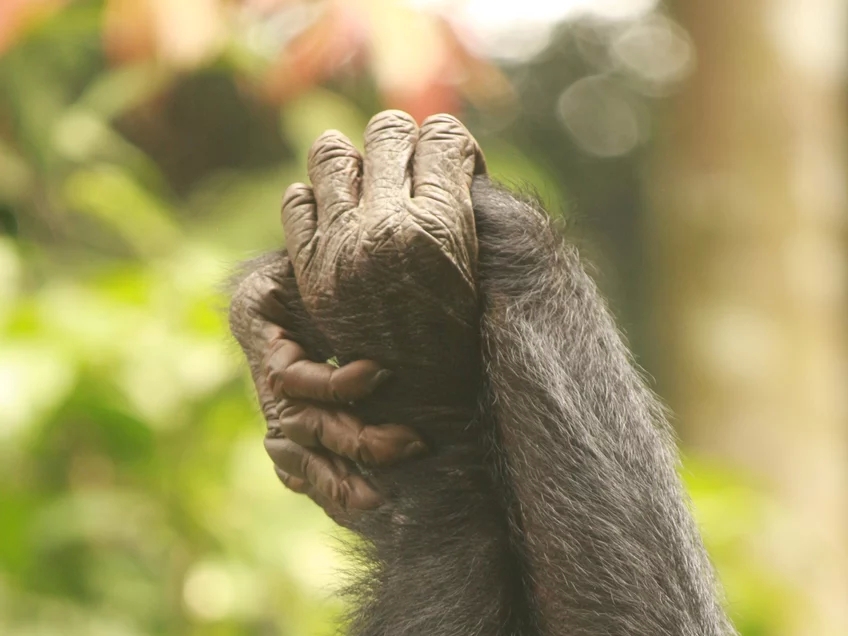We reach more than 65,000 registered users in Dec!! Register Now

Female bonobos keep males in check with solidarity
- May 27, 2025
- 1 Views
- 0 Likes
- 0 Comment
To the point
- Strategy driving female dominance: Female bonobos team up to suppress male aggression against them—the first evidence of animals deploying this strategy.
- Female coalitions uphold female power: In 85 percent of observed coalitions, females collectively targeted males, forcing them into submission and shaping the group’s dominance hierarchy.
- Implications for evolution and human society: The study suggests that power isn’t solely determined by physical strength. It can be driven by social intelligence and coalition-building by females.
This freedom enjoyed by females might sound normal by our standards, but according to Martin Surbeck from Harvard University, it’s “totally bizarre for an animal like a bonobo.” Bonobo males are larger and stronger than females, which gives them the physical upper hand to attack, force matings, and monopolize food. Like almost all other social mammals with larger males, bonobo societies should be dominated by males. And yet, bonobo females famously maintain a high social status compared to their larger male counterparts. Until now, though, nobody knew how this paradoxical dynamic was possible at all.
“There were competing ideas for how,” says Barbara Fruth from the Max Planck Institute of Animal Behavior who has led the LuiKotale bonobo research station for 30 years, “none of which had ever been tested in wild bonobos living in the jungles in which they evolved.”
Female solidarity as a tool for power
© MPI of Animal Behavior/ Christian Ziegler
“To our knowledge, this is the first evidence that female solidarity can invert the male-biased power structure that is typical of many mammal societies,” says Surbeck, the study’s first author. “It’s exciting to find that females can actively elevate their social status by supporting each other.”
A window to wild bonobos
An international team of researchers compiled 30 years of data from six wild bonobo communities across three field sites in the Democratic Republic of the Congo, which is the only country where bonobos live in the wild. The dataset included observations of 1,786 conflicts between males and females. The researchers analyzed the outcome of these conflicts—of which 1,099 were won by females—together with a range of social and demographic data. By doing so, they unearthed clues as to what influenced “female power” which they defined as all the factors that tip the outcome of a conflict. “You can win a conflict by being stronger, by having friends to back you up, or by having something that someone wants and cannot take by force,” says Surbeck the first author.The team had some early hunches as to where the results would point. Surbeck was sure that female domination was driven by reproductive strategies, such as hidden ovulation, which prevent males from monopolizing mating opportunities. The result of coalition formation came as a surprise. Adult females are unrelated immigrants from different communities who did not grow up together, which makes their deep bonds and cooperation unexpected. Also, adds Surbeck who runs the Kokolopori bonobo research station: “You just don’t see coalitions forming that much in the wild.”
But when coalitions form, they make an impression. The first sign is screaming so unbearably loud “you have to block your ears,” says Fruth. It’s hard for scientists to know what triggers a coalition as they form within seconds of an event, such as if a male attempts to hurt young. The target male is followed through trees by screaming females who can sometimes cause fatal injuries. “It’s a ferocious way to assert power,” adds Fruth. “You know why these males don’t try to overstep boundaries.”
Not always “dominance”
© Martin Surbeck, Kokolopori Bonobo Research Project
Female coalitions are just one mechanism that are likely to drive the empowerment of female bonobos, the authors say. Female reproductive autonomy almost certainly changes power relations between the sexes. The fertile window of females is hidden from males, who gain more by trying to stay near females than by aggressively coercing them to mate. Testing this and other ideas are topics of future research.
Deeper questions linger, but their answers might forever remain elusive. Says Fruth: “I’m still puzzled why, of all animals, bonobos were the ones to form female alliances. We might never know, but it gives me a glimmer of hope that females of our closest living relatives, in our evolutionary line, teamed up to take the reins of power alongside males.”evo
List of Referenes
- Martin Surbeck, Leveda Cheng, Melodie Kreyer, Gerrit Gort, Roger Mundry, Gottfried Hohmann, Barbara Fruth. Drivers of female power in bonobos. Communications Biology, 2025; 8 (1) DOI: 10.1038/s42003-025-07900-8
Cite This Article as
No tags found for this post









